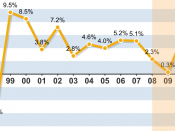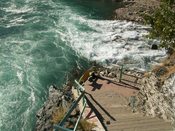Case study of Uttarakhand Disaster June 2013
The state of India named Uttarakhand had experienced a terrific disaster on 16 and 17 of June in the year 2013. The disaster - flash flood and landslide had occurred due to heavy to very heavy rainfall within the state in 15-17 June of the same year. The heavy rainfall had resulted in the enlargement of rivers, both in the upstream as well as downstream areas. The continuous rain disrupted normal life resulting in a total of 580 human lives being lost, more than 4,000 persons missing and over hundred thousand pilgrims being stranded. The enlargement of river also caused numerous landslides and toe erosion by the sediment loaded river caused breaching of roads, highways at many locations and washed away several of bridges.
The cloud bursts and heavy (64.5 - 124.4 mm) to very heavy rainfall (124.5 - 244.4 mm) hit several parts of the higher places in the State which was about 375% more than the benchmark rainfall during a normal monsoon season these give birth to melting of the Chorabari glacier which caused waters in the Chorabari Lake to rise.
The lake's weak barrier gave away and a huge volume of water along with large glacial boulders came down the channel to the east result in devastating Kedarnath town, Rambara, Gaurikund and other places in its way. (Parkash, june, 2013)[2: Parkash, S. (june, 2013). Brief Report on visit to Alaknanda Valley, Uttarakhand Himalaya. Delhi. ]
The furious river destroyed the buildings, entire settlements and every other infrastructure that came in its way. The flood destroyed the infrastructure including which were supposed to help at the time of disaster.
The worst impact happened is in the Mandakini river valley around the Kedarnath worship region (Rudraprayag district) and its downstream areas. The...


